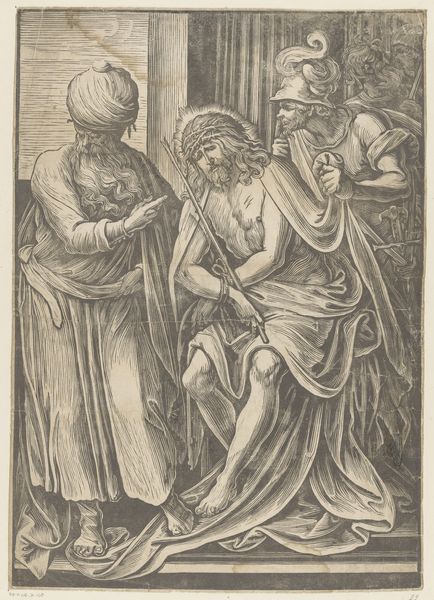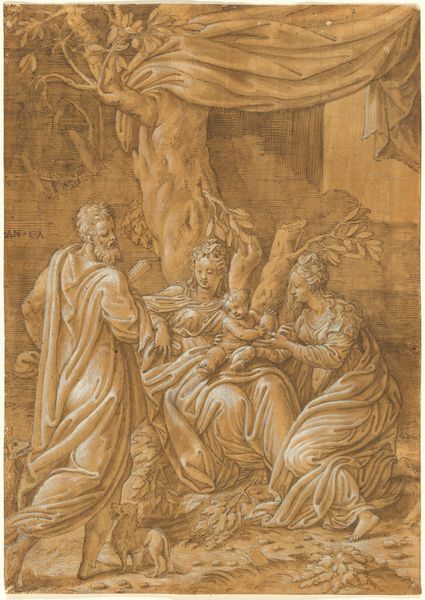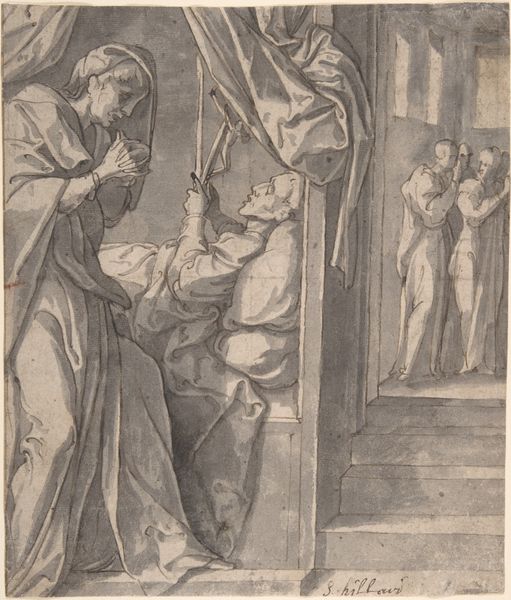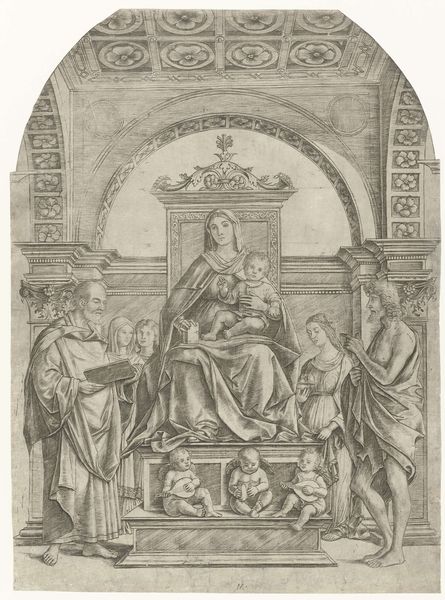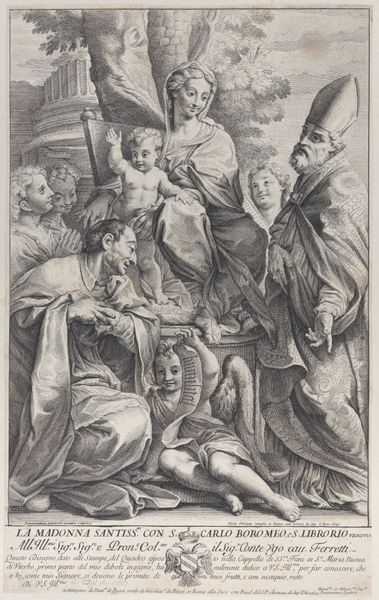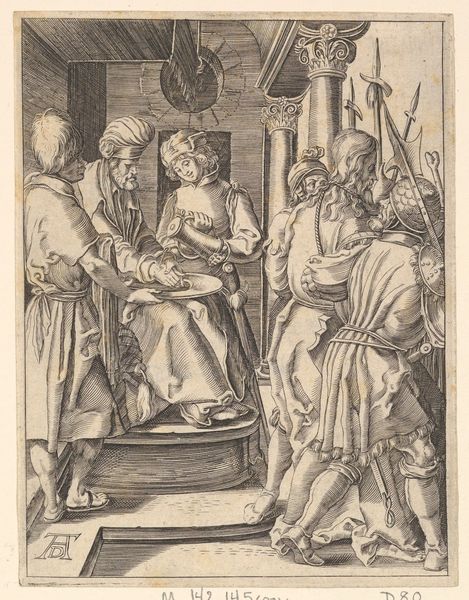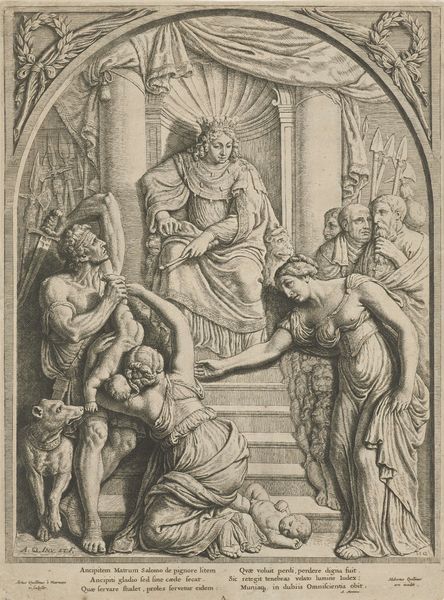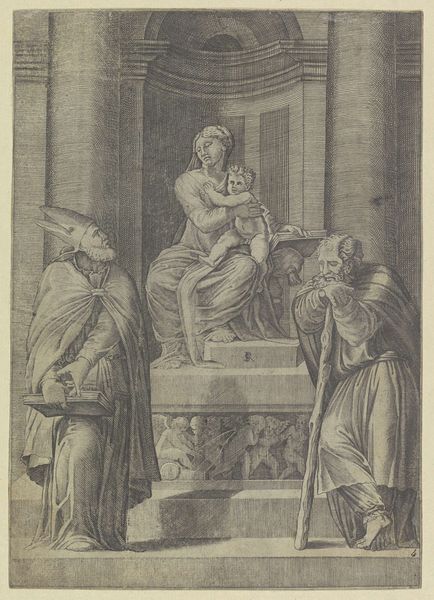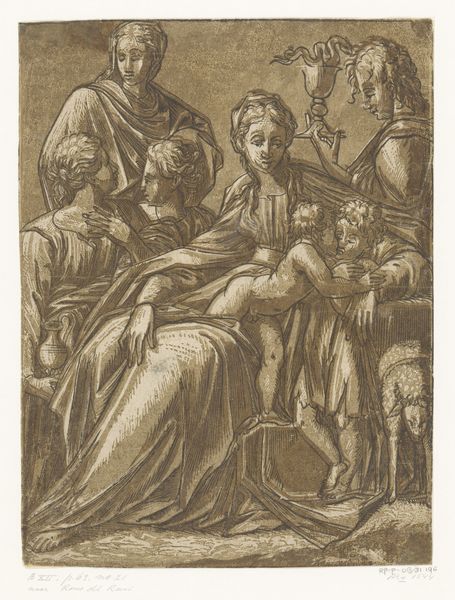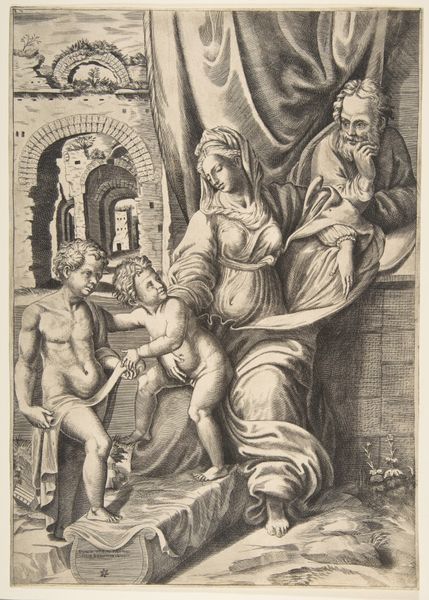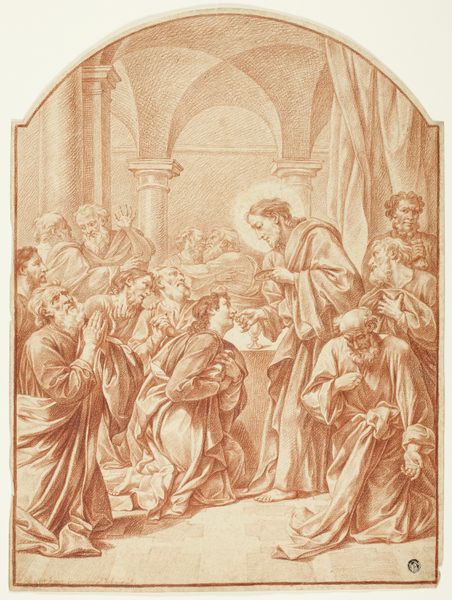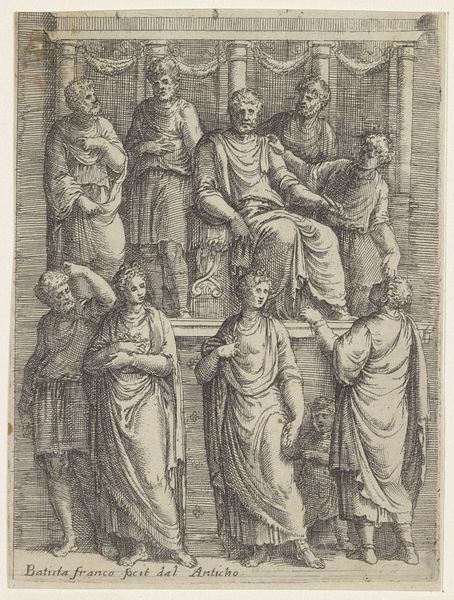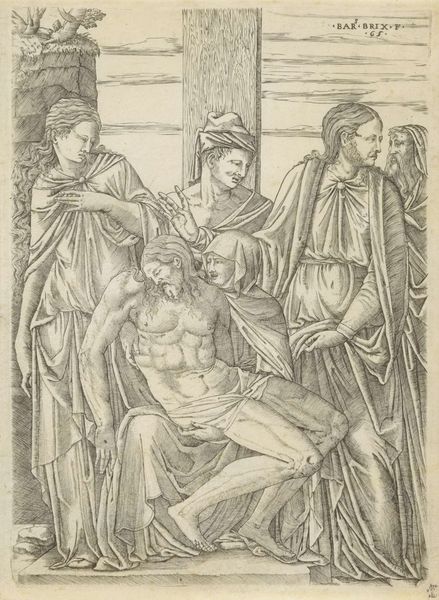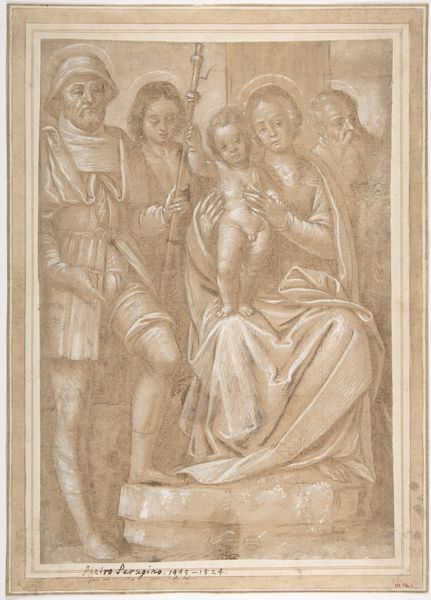
drawing, print, gouache, paper, ink, chalk, charcoal
#
drawing
#
narrative-art
# print
#
gouache
#
sculpture
#
charcoal drawing
#
figuration
#
paper
#
11_renaissance
#
charcoal art
#
ink
#
chalk
#
charcoal
#
history-painting
#
charcoal
Dimensions: 510 × 373 mm
Copyright: Public Domain
Curator: What strikes me first is the muted palette; it’s as if the emotional intensity has been intentionally dialed down. Editor: This drawing, "Flagellation of Saint Catherine," created by Bernardino Lanino between 1550 and 1555, depicts a violent episode. But I agree, there is a stillness, a sort of eerie calm, amidst the implied action. Curator: Exactly. It invites contemplation rather than revulsion, focusing perhaps on the symbolic resonance of St. Catherine’s martyrdom and her enduring resistance to oppression. How might contemporary feminist theory help us interpret her defiance? Editor: Setting aside intersectional narratives for a moment, let's consider the formal elements. The composition, with its centralized figure framed by two executioners, evokes a classical frieze. The column in the background, acting as both support and division, creates a visually satisfying tripartite structure. Note also the drapery, meticulously rendered in charcoal, ink, chalk and gouache on paper. Curator: Certainly, the artistry cannot be denied. But beyond formal composition, isn't it also about power dynamics, about the violence inflicted upon women, then and now? We should be asking what it means to represent such brutality within a religious context. Editor: True, but to appreciate Lanino's success in depicting the flagellation, we must analyze how the artist achieves a balance between dynamism and control, chaos and order. The torturers' postures and St. Catherine’s expression seem almost studied and that hints at the inherent paradoxes within religious iconography. Curator: Still, it's a loaded image, demanding critical engagement with historical systems of injustice. By delving into the social realities of Renaissance-era women and the church’s role in enforcing power structures, we find profound insight. Editor: I appreciate that insight; perhaps through the rendering and interplay of geometric forms, the artist achieves an overall harmony which allows even us, viewing it centuries later, to attempt interpretation. Curator: Indeed, this work sparks so much discourse and questioning.
Comments
No comments
Be the first to comment and join the conversation on the ultimate creative platform.
